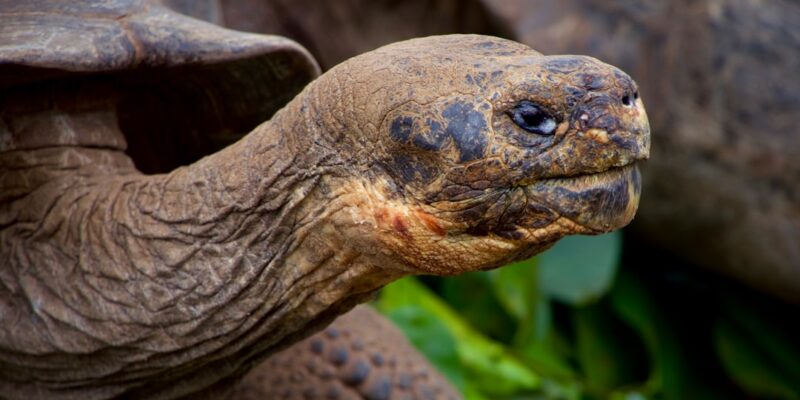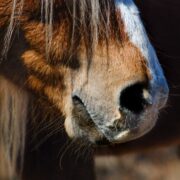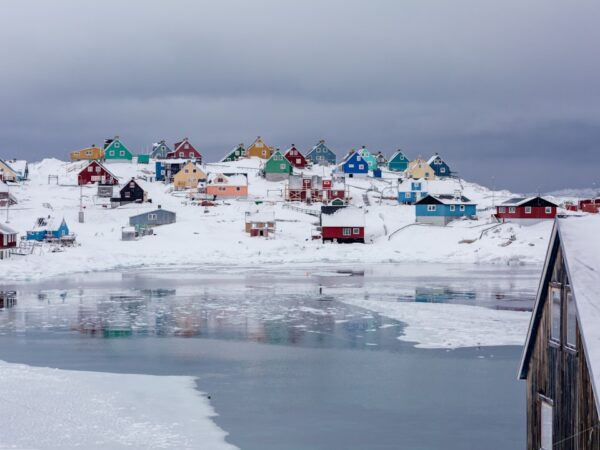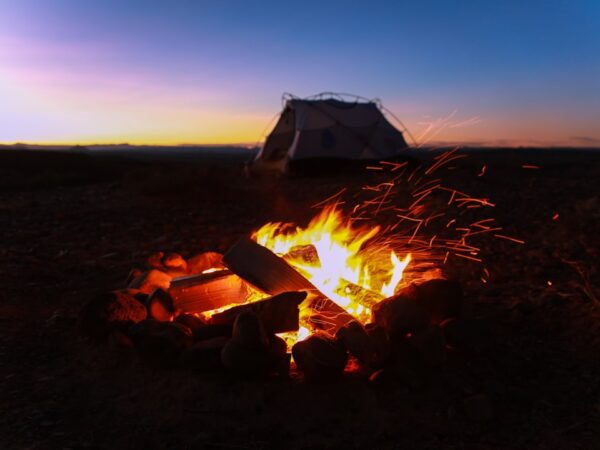
Capturing Galapagos Wildlife: A Photographer’s Dream
The Galapagos Islands, located in the Pacific Ocean off the coast of Ecuador, are a group of volcanic islands known for their unique wildlife and stunning landscapes. The islands have a rich history, with their first recorded discovery dating back to 1535 by the Spanish explorer Fray Tomás de Berlanga. The islands were later made famous by Charles Darwin, who visited in 1835 and developed his theory of evolution based on his observations of the diverse species found there.
The Galapagos Islands are a popular destination for wildlife photography due to their incredible biodiversity. The islands are home to a wide variety of species, many of which are found nowhere else in the world. From giant tortoises and marine iguanas to blue-footed boobies and Galapagos penguins, the islands offer photographers a unique opportunity to capture these iconic creatures in their natural habitat.
Key Takeaways
- The Galapagos Islands are a unique and biodiverse ecosystem, home to many endemic species.
- Preparing for a photography expedition to the Galapagos requires careful consideration of equipment and ethical considerations.
- Choosing the right camera and equipment is crucial for capturing stunning wildlife shots in the Galapagos.
- Techniques such as patience, persistence, and understanding animal behavior are essential for successful wildlife photography in the Galapagos.
- Ethical considerations, such as respecting animal habitats and avoiding disturbing wildlife, are important for responsible wildlife photography in the Galapagos.
The Unique Wildlife of the Galapagos
The Galapagos Islands are home to an array of unique wildlife species that have adapted to the isolated and harsh environment of the islands. One of the most famous examples is the Galapagos giant tortoise, which can live for over 100 years and weigh up to 900 pounds. These gentle giants can be found roaming freely on several of the islands, providing photographers with ample opportunities to capture their majestic presence.
Another iconic species found in the Galapagos is the marine iguana. These reptiles are the only iguanas in the world that can swim in the ocean, making them a fascinating subject for underwater photography. With their distinctive black coloration and red and green markings, they make for striking photographs against the backdrop of volcanic rocks and crystal-clear waters.
Other notable species found in the Galapagos include blue-footed boobies, which are known for their vibrant blue feet and elaborate courtship dances, as well as Galapagos penguins, the only penguin species found north of the equator. These unique creatures, along with many others, make the Galapagos Islands a paradise for wildlife photographers.
Preparing for a Photography Expedition to the Galapagos
Before embarking on a photography expedition to the Galapagos Islands, it is important to do thorough research and plan accordingly. One of the first steps is to find and book a photography tour that specializes in capturing the unique wildlife of the islands. These tours are led by experienced guides who are familiar with the best locations and times to photograph different species.
When packing for a photography trip to the Galapagos, it is essential to bring the right equipment. This includes a high-quality camera body and a variety of lenses suitable for wildlife photography. It is also important to pack extra batteries, memory cards, and a sturdy tripod to ensure that you have everything you need for long days of shooting in the field.
Understanding the weather and climate in the Galapagos is also crucial for planning your photography expedition. The islands have a subtropical climate, with two distinct seasons: the warm and wet season from December to May, and the cool and dry season from June to November. The weather can be unpredictable, so it is important to pack appropriate clothing and gear to protect yourself and your equipment from rain, sun, and wind.
Choosing the Right Camera and Equipment
| Factors to Consider | Importance | Examples |
|---|---|---|
| Camera Type | High | DSLR, Mirrorless, Point-and-Shoot |
| Lens Compatibility | High | Interchangeable, Fixed |
| Image Quality | High | Resolution, ISO, Dynamic Range |
| Size and Weight | Medium | Portability, Comfort |
| Features | Medium | Auto-Focus, Image Stabilization, Wi-Fi |
| Budget | Low | Price Range, Value for Money |
When it comes to wildlife photography in the Galapagos, having the right camera and equipment can make all the difference in capturing stunning shots. The most important consideration is choosing a camera with a fast autofocus system and a high burst rate, as wildlife can be unpredictable and move quickly.
In terms of lenses, it is recommended to have a telephoto lens with a focal length of at least 300mm to capture distant subjects such as birds or marine mammals. A wide-angle lens can also be useful for capturing landscapes and environmental shots. Additionally, a macro lens can be handy for capturing close-up details of smaller creatures such as insects or flowers.
Other essential equipment to bring on a photography trip to the Galapagos includes extra batteries, memory cards, and a sturdy tripod. It is also important to have a camera bag or backpack that is comfortable to carry and provides easy access to your gear while in the field.
Techniques for Capturing Stunning Wildlife Shots
Capturing stunning wildlife shots in the Galapagos requires a combination of technical skill and artistic vision. Understanding lighting and composition is key to creating visually appealing photographs.
In wildlife photography, the quality of light can make or break a shot. The best times for photography in the Galapagos are during the early morning and late afternoon when the light is soft and golden. This is known as the “golden hour” and provides a warm and flattering light that enhances the colors and textures of the subjects.
Composition is another important aspect of wildlife photography. It is important to consider the rule of thirds, which involves placing the subject off-center to create a more dynamic and visually interesting image. Additionally, using leading lines or framing techniques can help draw attention to the subject and create a sense of depth in the photograph.
When it comes to capturing action shots and portraits of wildlife, it is important to be patient and observant. Anticipating the behavior of the animals can help you capture decisive moments, such as a bird taking flight or a sea lion diving into the water. It is also important to focus on the eyes of the subject, as they are often the most expressive part of an animal’s face.
Using different camera settings can also help achieve the desired effect in wildlife photography. For action shots, using a fast shutter speed can freeze motion and capture sharp details. On the other hand, using a slower shutter speed can create a sense of motion or blur, which can be effective for capturing the movement of animals in their natural habitat.
Photographing Sea Creatures: Tips and Tricks
Photographing sea creatures in the Galapagos presents its own set of challenges and requires specialized techniques and equipment. The crystal-clear waters of the islands offer incredible visibility, but underwater photography can be technically demanding.
One of the main challenges of photographing sea creatures is dealing with the low light conditions underwater. To compensate for this, it is important to use a wide aperture and a high ISO setting to allow more light into the camera. Additionally, using a strobe or underwater flash can help illuminate the subject and bring out its colors.
When photographing sea creatures, it is important to get as close as possible to the subject without disturbing it. This can be achieved by using a wide-angle lens and getting down to eye level with the subject. It is also important to be patient and wait for the right moment to capture the behavior or movement of the animal.
Recommended camera settings for underwater photography in the Galapagos include shooting in manual mode to have full control over exposure settings. It is also important to use a fast shutter speed to freeze motion and a small aperture to ensure that the entire subject is in focus.
The Importance of Patience and Persistence in Wildlife Photography
Patience and persistence are key qualities for any wildlife photographer, especially when shooting in a remote and unpredictable location like the Galapagos Islands. Wildlife can be elusive and unpredictable, so it is important to be patient and wait for the right moment to capture a great shot.
Staying focused and motivated during a photography trip can be challenging, especially when faced with adverse weather conditions or long periods of waiting. It is important to remember that wildlife photography is not just about capturing stunning images, but also about experiencing and appreciating nature.
Examples of how patience and persistence can lead to great shots can be seen in the work of renowned wildlife photographers who have spent years documenting the wildlife of the Galapagos. Their dedication and commitment have resulted in breathtaking images that capture the beauty and uniqueness of the islands’ wildlife.
Ethical Considerations for Photographing Wildlife in the Galapagos
When photographing wildlife in the Galapagos, it is important to follow ethical guidelines to minimize disturbance to the animals and their environment. The Galapagos National Park has strict regulations in place to protect the islands’ fragile ecosystem and ensure the well-being of its wildlife.
Some guidelines for ethical wildlife photography in the Galapagos include keeping a safe distance from the animals, not touching or feeding them, and avoiding sudden movements or loud noises that could startle or stress them. It is also important to respect nesting sites and breeding areas, as disturbing these can have serious consequences for the survival of the species.
Minimizing disturbance to wildlife while still getting great shots can be achieved by using long lenses to maintain a safe distance, using silent shooting mode to reduce noise, and being patient and observant to capture natural behaviors without causing stress or disruption.
Respecting the environment and wildlife in the Galapagos is not only important for ethical reasons but also for the long-term conservation of these unique islands. By practicing responsible photography, photographers can contribute to the preservation of this fragile ecosystem.
Editing and Post-Processing Wildlife Photos
Editing and post-processing are essential steps in creating stunning wildlife photos. There are various editing software and tools available that can help enhance and improve your images.
Some popular editing software for wildlife photography include Adobe Lightroom, Photoshop, and Capture One. These programs offer a wide range of tools and features that allow you to adjust exposure, contrast, color balance, and sharpness, among other things.
When editing wildlife photos, it is important to maintain a natural look and avoid excessive manipulation. The goal is to enhance the image while staying true to the original scene and the natural colors and textures of the subject.
Examples of before-and-after photos can demonstrate the power of editing and post-processing in wildlife photography. By making subtle adjustments to exposure, contrast, and color, photographers can transform a good photo into a stunning one.
Sharing Your Galapagos Wildlife Photography with the World
After capturing stunning wildlife photos in the Galapagos, it is time to share them with others and raise awareness about the importance of conservation efforts in the islands.
There are various ways to share your photos with others, including social media platforms such as Instagram, Facebook, and Twitter. These platforms allow you to reach a wide audience and engage with fellow photographers and nature enthusiasts.
Creating a photography portfolio or website is another great way to showcase your work and attract potential clients or collaborators. A well-designed portfolio can help you stand out from the crowd and demonstrate your skills and unique vision as a wildlife photographer.
Using your photos to raise awareness about conservation efforts in the Galapagos is a powerful way to make a difference. By sharing your images with organizations dedicated to protecting the islands’ wildlife and environment, you can contribute to their educational and advocacy efforts.
In conclusion, the Galapagos Islands offer wildlife photographers a unique opportunity to capture stunning images of some of the world’s most iconic species. By researching and planning ahead, choosing the right equipment, and mastering various techniques, photographers can capture breathtaking shots that showcase the beauty and diversity of this extraordinary destination. It is important to approach wildlife photography in the Galapagos with patience, respect, and a commitment to ethical practices. By sharing our photos with others, we can raise awareness about the importance of conservation efforts in this fragile ecosystem and inspire others to appreciate and protect these incredible islands.
FAQs
What is wildlife photography?
Wildlife photography is the art of capturing photographs of animals in their natural habitat.
What are the Galapagos Islands?
The Galapagos Islands are a group of volcanic islands located in the Pacific Ocean, about 600 miles off the coast of Ecuador.
What kind of wildlife can be found in the Galapagos Islands?
The Galapagos Islands are home to a wide variety of unique and endemic species, including giant tortoises, marine iguanas, blue-footed boobies, and Galapagos penguins.
What makes the Galapagos Islands a popular destination for wildlife photography?
The Galapagos Islands are a popular destination for wildlife photography because of the abundance of unique and endemic species that can be found there, as well as the opportunity to observe and photograph these animals in their natural habitat.
What are some tips for wildlife photography in the Galapagos Islands?
Some tips for wildlife photography in the Galapagos Islands include using a telephoto lens to capture close-up shots of animals, being patient and waiting for the right moment to take a photo, and respecting the animals and their natural habitat by not disturbing them or getting too close.













